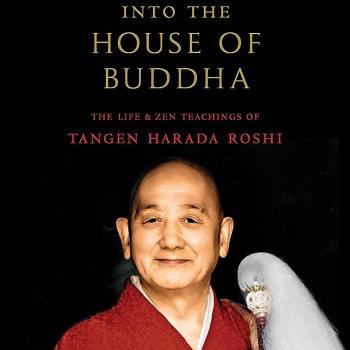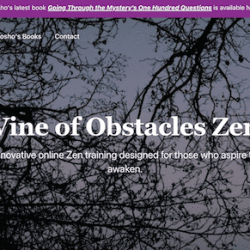 “Why does Dogen make it so hard to understand what he’s saying?”
“Why does Dogen make it so hard to understand what he’s saying?”
So asked (or exclaimed) a student in a recent study group. We’d been working through Thirty-seven Conditions Contributing to Bodhisattva Practice, a Dogen fascicle that Katagiri Roshi likened to a dharani (a powerful and evocative but incomprehensible series of sounds) and had just tackled this passage:
[29] The root of samadhi is refraining from touching the eyebrows and brushing up the eyebrows. Thus, it is beyond obscuring cause and effect and beyond falling into cause and effect. From this root of samadhi, you enter the donkey’s womb, the horse’s womb. It is like a stone wrapped around a jade. Do not say the entire stone is a jade. It is also like the earth topped with a mountain. Do not say the entire earth is the mountain. Even so, you leap out and leap in from the top of the mountain.
The sincerity of the questioner made the question fresh for me too. Why does Dogen express himself in way that is so difficult to understand?
I’ve had many thoughts about this over the years and today a new one – he wanted to make us think.
Thinking is often identified as the enemy in Zen practice. Could it be, at least in Dogen Zen, that the whole point is thinking?
Let me digress. I’ve been reading Daniel Kahneman’s Thinking, Fast and Slow about our fast, intuitive thinking and the more ponderous and energy-consumptive slow thinking. Here’s a little puzzle that helps distinguish fast and slow thinking.
A bat and ball cost $1.10.
The bat costs one dollar more than the ball.
How much does the ball cost?
Kahneman comments, “A number came to mind. The number, of course, is 10: 10 cents. The distinctive mark of this easy puzzle is that it evokes an answer that is intuitive, appealing, and wrong.”
I won’t tell you the right answer. Figure it out and get a taste of slow thinking.
Slow thinking isn’t necessarily better than fast thinking – we need both and to paraphrase Dogen, we leap out and leap in with both fast and slow thinking. And according again to Kahneman, “As cognitive scientists have emphasized in recent years, cognition is embodied; you think with your body, not only with your brain.”
The zazen form is, therefore, a form of thought. Dropping thinking in zazen deepens our lives through this profoundly reflective and delicious process.
Working with the above Dogen passage, invites both slow and fast thinking as the bodymind coughs up associations and these are turned and played, fast and slow, yes, like entangling vines.












